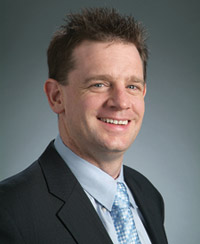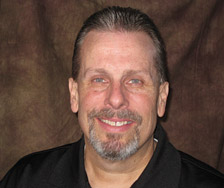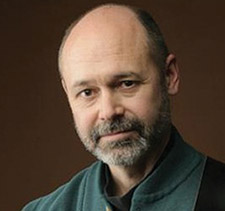2010 'State of the Edit'

This year’s “State of the Edit” report harvested some timely perspectives on our chosen craft from top industry insiders.
“We’re seeing a growing interest in what we call ‘editing for engaging experiences’ in Internet distribution, letting Internet viewers appreciate the additional benefits of Web-based delivery,” said Simon Hayhurst, senior director, product management, dynamic media at Adobe Systems Inc. “That means including all the metadata information available to the online viewer. Our ‘script-to-screen’ philosophy in Adobe Premiere lets the editor convey a maximum of the information generated during production to audiences who are increasingly turning to Internet delivery both on their home computer screens or to Internet-capable HDTVs.”
For example, people watching Fox’s “24” may want to pull up background information about characters from past episodes, or new locations Jack Bauer is exploring.
“That’s what we mean by ‘engaging experiences’ that can give productions like ‘24’ additional dimensions when seen online,” Hayhurst said. “This is a tremendous opportunity to build new post-production workflows without increasing production costs.”
When Autodesk brought out its Smoke 2010 software for the Mac platform last December, it generated new interest in using the system as the hub of a whole post-production workflow, according to Marc Hamaker, product marketing manager at the Montreal-based company.

Simon Hayhurst “As creative or ‘offline’ editing becomes commoditized, i.e. more available to everyone, experienced editors running a system as powerful as Smoke are learning they can differentiate themselves by emphasizing finishing services,” Hamaker said. “That way they can bring their own skill sets using high-end tools for effects creation, colorization and mastering in multiple formats.”
Previously, Autodesk’s Smoke came in a Linux-only turnkey configuration.
“Enabling Smoke on a Mac empowers a greater number of experienced editors to bring in more work and increase their profitability,” Hamaker said. “After all, we recognize offline editing is available on anyone’s laptop. But finishing demands veteran skills.”
EXTENDED COLLABORATION
Editors are concerned with three themes today, according to Patrick McLean, director of marketing for post and broadcast at Avid. “First is asset management, given the large amount of files and all their various formats being transported into their editing systems,” he said. “That, of course, in-cludes ingesting the associated metadata, which needs to be mounted at the same time.”

Mike Downey To facilitate this, Avid has changed the way they implement new codecs.
“By making our API [Application Programming Interface] available to developers, we can increase the ingest options available on our Avid Media Access plug-in architecture,” McLean said.
Second, Avid is answering the call for the extended collaboration today’s editors rely on. As McLean explained, “Through simple desktop tools, eve-ryone from production assistant to producer can now participate in post production from anywhere with an Internet connection.”
Third, reflected by recent announcements about proposed 3D broadcasting is the need for stereoscopic 3D editing.
“We’ll see this addressed first in sports,” McLean said, “and Avid has already implemented a 3D editing workflow in our version 3.5 software with more to come.”
INCREASING DEMANDS

Damon Hawkins Despite the fact that Grass Valley’s Edius editing software has often been the first to tackle new digital formats such as AVC Intra, Mike Downey, technical sales support at Grass Valley admits that the editors he talks with would prefer an end to the endless format proliferations.
“All the formats have their own advantages,” Downey said, “but to the audience’s eyes all the HD formats look awfully good. It would be very helpful if the industry could make up its mind.”
Like many NLEs, Edius takes maximum advantage of today’s increasing computing power. “People just can’t handle waiting,” Downey said. “So real-time HD performance without format-transforming plug-ins is mandatory in today’s NLEs. Bombarding editors with all the new codecs can sometimes get in the way.”

Boris Yamnitsky Editors need to keep up with the increasing demands of today’s higher-resolution recordings, according to Boris Yamnitsky, president of Boris FX/Media 100.
“We are seeing increasing requests for handling even 2K and 4K formats. Even full 1080p can put a lot of demands on an NLE’s hardware and soft-ware, so as physical memory becomes increasingly inexpensive we are seeing an accelerated movement to 64-bit software designs.”
This gets us past the limitation of addressing just 4 MB of RAM under a 32-bit architecture.
“Most operating systems are already 64-bit, so this is just a logical extension,” Yamnitsky said. “As 4K post production becomes more prevalent, 64-bit applications are going to become crucial to maintaining the editing workflow.”
Damon Hawkins, product manager for post and DI at Quantel, believes that the big drive in editing these days is stereo 3D. “That includes everything from on-set visualization through editing to creating multiple formats of 3D deliverables,” Hawkins said. “I’m told that over the next year there will be at least one 3D movie released every week and a half. So the output rate is going up dramatically.”

Michael Bryant Of course, the increase of 3DTVs will also drive this market.
“We are starting to appreciate the need to verify the quality of 3D recordings while still on set,” Hawkins added. “So this requires bringing editing skills into the production process with the ability to properly evaluate matters such as convergence and depth placement even before the material gets into editing. Tools like our Pablo let you preview this all the way up to 2K both during production and in post.”
I caught the representative for Sony Vegas Pro 9 software, Michael Bryant, director of marketing for Sony Creative Software while he was at the Na-tional Association of Music Merchants (NAMM) Show where he was showing music video editors how easy it is to create promotional videos in various forms of anaglyphic 3D.
“This is just the beginning of what we will be offering down the road,” Bryant said, “but we are certainly capable of doing anaglyph right now with the tools in our software.”
Sony Vegas 9 is well known for its multicam editing capabilities, which music editors love, and Bryant heralded a third-party software from Singular Software Inc. called “PluralEyes,” a plug-in for Vegas that can sync multiple cameras to their music track, even if matching SMPTE code is lacking.
“It makes editing as quick as someone calling shots in a live show,” Bryant said. “PluralEyes analyzes the audio and automatically aligns all the cam-era recordings. It’s just one more tool available to Sony Vegas editors to advance the state-of-our-editing art.”
Jay Ankeney is a freelance editor and post-production consultant based in Los Angeles. Write him at 220 39th St. (upper), Manhattan Beach, Calif. 90266 or atJayAnkeney@mac.com.
Get the TV Tech Newsletter
The professional video industry's #1 source for news, trends and product and tech information. Sign up below.
